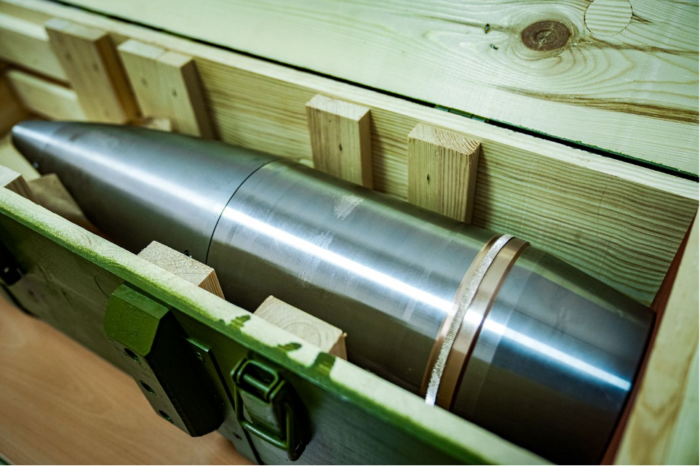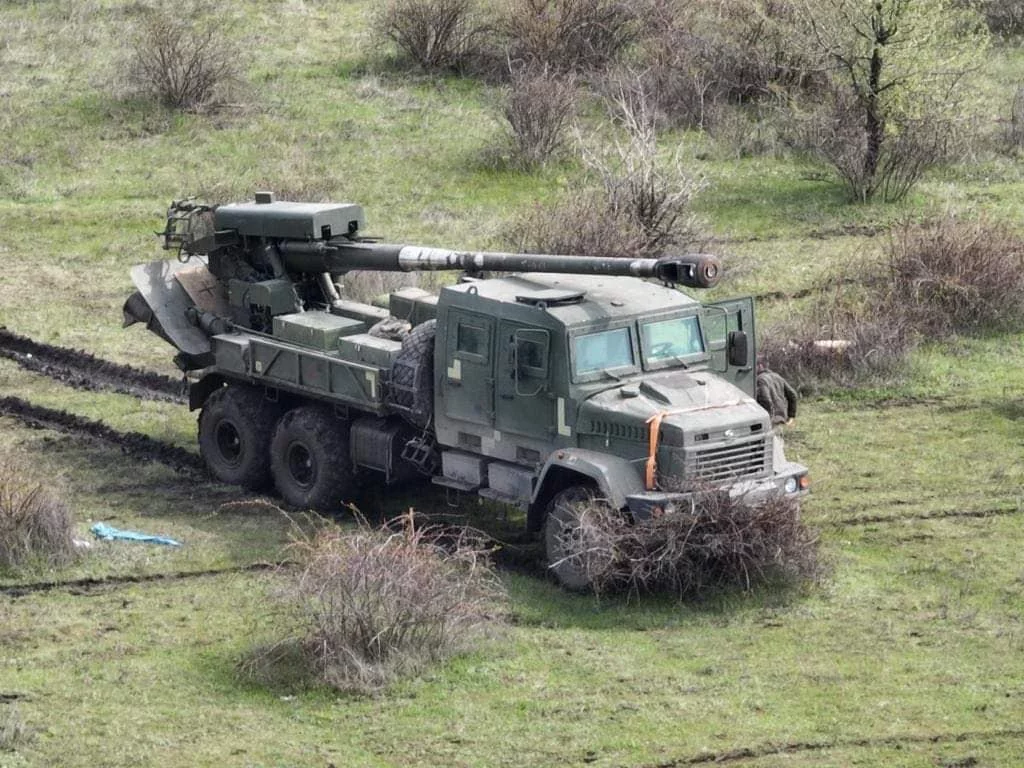Significance of Ukraine's domestic artillery ammunition production
At the peak of artillery battles in the summer of 2022, Ukraine and Russia used as much ammunition in a month as the US and Russia produced in a single day. According to the Ukrainian General Staff, Russia was firing 40,000 ammunition rounds per day. Meanwhile, Ukraine was only firing 4,000 rounds. According to Ukrainian military outlet Militarnyi, the Russian Federation has used at least 7 million shells since 24 February, when it launched its full-scale war against Ukraine. After the collapse of the USSR, Ukraine had vast stocks of 152 mm Soviet-caliber artillery ammunition. However, the ongoing war since 2014 and a series of Russian sabotage campaigns depleted this stock. Analysts estimate that Ukraine entered the 2022 Russian attack with ammunition for only two months of such intensive warfare. According to the Royal United Services Institute (RUSI), Ukraine maintained artillery parity for the first month and a half. Then it began to run low on munitions so that, by June, the Russian army had a 10:1 advantage in the volume of fire. Supplies of Soviet-caliber ammunition from former Warsaw Pact states supported Ukraine but were never enough for such a large-scale war. Since Soviet-caliber artillery still constituted more than 50% of Ukrainian artillery in 2022, it was essential to start domestic ammunition production.For the first time since 1991, Ukraine launched massive production of 152mm ammunition for Soviet artillery
— Euromaidan Press (@EuromaidanPress) December 6, 2022
The production is split between many cities to avoid vulnerability to missiles. Ukrainian celebrities wrote hello to occupiers on the first rounds. https://t.co/JjQei5AEwk pic.twitter.com/hAovtyBFcB
Scaling up the Ukrainian production
“We are talking about thousands – this is already an industrial scale,” Ukraine’s Secretary of the National Security and Defense Council Oleksiy Danilov mentioned on 13 December 2022.It is indeed a historical statement because neither during Soviet times nor during independence has Ukraine had a full cycle of artillery ammunition production. It first tried to start it in 2018 and ordered the required equipment. However, a lack of financing and poor management left the project unfinished. According to the state defense concern Ukroboronprom, Ukraine only started mass production of artillery ammunition in the fall of 2022.
“Unfortunately, the war dictated new rules, so the production of projectiles was completely dispersed over a large number of cities in order to make it impossible for the enemy to cover our employees with missiles... We finally have serial ammunition, and the real task is to increase the production capacity. This is what we do,” the Ukroboronprom state concern writes.None of Ukraine's officials would disclose the precise capacity of Ukraine's ammunition industry, but left some hints and announced plans to "scale up the production in the coming months," which would be relatively quick.
“I expect that within a few months [Ukrainian] manufacturers will realistically increase their volumes. They already made the commitment,” Ukraine’s Minister of Defense Oleksii Reznikov said in November 2022, commenting on the volumes of production.Oleh Boldyrev, Ukroboronprom Project Manager, outlined several details on TV. In particular, he clarified that the production had begun in September 2022, and since then, the state enterprise has been producing 1,000-2,000 shells per month:
“Every few days we unload for the military several hundred 152-mm and several hundred 122-mm shells. Since the production is spread across several locations, it is slower due to logistical difficulties. The task is to scale it up.”Ukroboronprom explained that one batch of ammunition contained 1,000 shells. Therefore, "batches of ammunition have been produced" implies a monthly output of 1,000-2,000 at the least. Compared to war demands, Ukraine's current production capacities appear relatively small. On the other hand, it is significant compared to other states' capabilities. For example, the US industry currently produces nearly 15,000 155-mm ammunition rounds monthly. According to various estimates, the Russian industry could be making, at best, 20,000 152-mm rounds per month, although the precise data is classified. The US plans to increase ammunition production to 20,000 per month by spring 2023 and 40,000 per month by 2025, given the Russo-Ukrainian war's intensity and the ammunition consumption speed.

“From 2014 to 2018, there were six such explosions, which destroyed more than 210,000 tonnes of ammunition, a large part of which were 152-mm shells and rockets for MLRS. For comparison, during the five years of the war in Donbas, the UAF spent about 70,000 tons of ammunition in total,” analysts of the Royal United Services Institute (RUSI) write.Similar explosions happened in the ammunition warehouses in the Czech Republic and Bulgaria after 2014. Most likely, Russian special forces from the Main Intelligence Directorate (GRU) were behind them, Bellingcat investigators write. Explosions happened mainly in the warehouses of Soviet-caliber ammunition, which these countries were either supplying or could potentially supply to Ukraine. One of the biggest was the 2017 explosions in Balakliya warehouses, Kharkiv Oblast. According to the report of the Ukrainian parliament, the explosions destroyed $400 million worth of ammunition. That is why, unlike 155-mm NATO caliber ammunition, the 152-mm caliber was in short supply shortly after Russia's full-scale war against Ukraine began in 2022.
International help and integration of Ukraine's defense industry with NATO during the war
Trending Now
"The Czech Republic will become a reliable industrial rear for the Ukrainian defense and the entire defense-industrial complex," said Deputy Minister of Defense of the Czech Republic Tomasz Kopechny on the agreement.
What countries have given the most heavy weapons to Ukraine?
Ukraine could also be co-producing 155-mm artillery ammunition
Interestingly, Ukraine's Secretary of the National Security and Defense Council, Oleksiy Danilov, has also noted that Ukraine has started producing not only 152-mm Soviet-caliber ammunition but also 155-mm NATO caliber."I can say that the production of 152 mm and 155 mm caliber artillery ammunition has been arranged at our enterprises. Now we are arranging the production of mines and other things," Danilov said on 13 December.It is the only time a Ukrainian official has stated that Ukraine already produces NATO-caliber artillery ammunition. It is unclear whether he mentioned the incorrect caliber or claimed that Ukraine produces 155-mm ammunition. Unlike the 152-mm Ukrainian ammunition, the 155-mm was never captured on camera. If true, the launch of such a production would be a tremendously swift success. Most likely, Ukrainian enterprises would be able to do so only in close cooperation with partner countries. If not already the case, Ukraine should initiate such cooperation in light of its announced transition to NATO-standard artillery.

Related:
- Ukrainian FM doesn’t understand Germany’s hesitation to supply Ukraine tanks while supplying artillery
- “A day in Ukraine is a month or more in Afghanistan” in terms of artillery ammo consumption – expert
- Slovakia to send Ukraine ammunition for aircraft, 300 generators
- Ukroboronprom and NATO member country to build plant to produce military equipment

